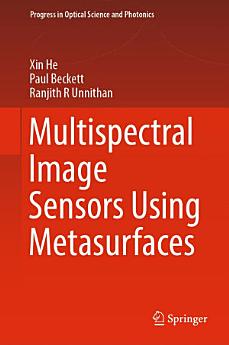Multispectral Image Sensors Using Metasurfaces
Om den här e-boken
Om författaren
Xin He received his M.Eng. and Ph.D degrees from the University of Melbourne, Australia, in 2016 and 2020 respectively. His research interests include metasurface, nano-optics and spectral imaging. He obtained advanced skills on Micro/Nano Fabrication and COMSOL Multiphysics with RF and optics model. Except publications, he also created a prototype of a multispectral image sensor with 6 bands in the visible and infrared bands for commercial exploitation.
Paul Beckett received his B. Eng. degree in Communication Engineering, M. Eng. and Ph.D. degrees from RMIT University, Melbourne, Australia, in 1975, 1984, and 2007, respectively. Recently retired after an academic career spanning 38 years, he is currently an Honorary Associate Professor with the School of Engineering, RMIT University where his research interests include the design and simulation of nanoscale architectures and the mixed–signal modeling of asynchronous reconfigurable circuits.
Ranjith R Unnithan is a Research Group Leader and Senior Lecturer at the Department of Electrical and Electronic Engineering, the University of Melbourne, Melbourne, VIC, Australia. He is also Director of sensor research at Hort-Eye Pty Ltd., Melbourne. He received his Ph.D. degree in electrical engineering from the University of Cambridge, Cambridge, U.K., in November 2011. His research areas span CMOS image sensors, AR displays, sensor electronics for biomedical applications, drone-based sensors and applications, multispectral thermal cameras, and nanophotonic engineering.







